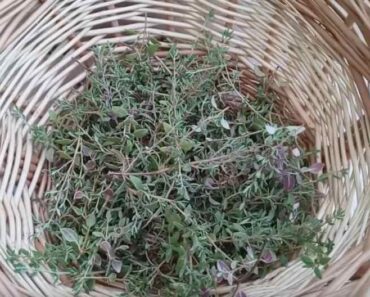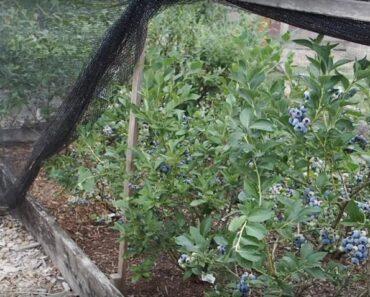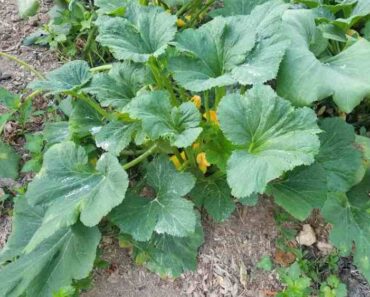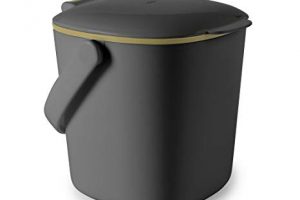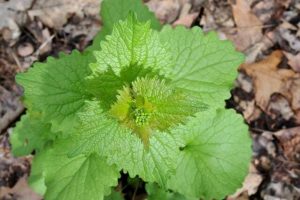
By Erin Marissa Russell
Peace lilies are beautiful houseplants, but they are a bit sensitive to overwatering and underwatering. We’ll explain how to tell if your peace lily is overwatered or underwatered, how to make sure you give it just the right amount of water, and how to revive an overwatered or underwatered peace lily.
How to Tell a Peace Lily Is Overwatered
Both underwatering and underwatering can cause wilting or discoloration of foliage, so it’s important to pay attention to the entire picture of symptoms your plant is presenting. Here are some signs of overwatering to look for. Wilting can also be a symptom of sudden temperature changes.
- Wet Plus Wilt: A surefire sign of an overwatered peace lily is when the soil is wet but the plant appears to be wilting. In addition to simply appearing wet, you can tell the soil is wet if the plant pot feels heavy when you pick it up. Or you can stick a finger into the soil. If it feels moist or the earth clings to your skin, the soil is wet.
- Brown, Wilting Leaves: Overwatered peace lilies may also exhibit wilting or curled leaves paired with discoloration to brown. The wilting is an important component to check for, as the browning can look similar to the crispy, dried-out brown foliage of an underwatered plant. In fact, the tips of the leaves can turn black and dried out. Look for this discoloration partnered with a yellow margin to indicate overwatering.
- Signs of Rot: Overwatered peace lilies are susceptible to rot diseases as well. Look for yellowed foliage that wilts near the lower part of the plant and dark brown spots on the petioles, between the leaves and the main stem. Before these symptoms are visible, you may be able to detect impending rot by an unpleasant odor to the soil and root area.
Signs of underwatering can also accompany rotting that comes from overwatering, in a seeming contradiction. Actually, the rot that results from overwatering results in death of parts of the peace lily’s roots, which can then prevent parts of the plant from getting enough water.
- Swelling: A plant that chronically gets too much moisture may appear swelled or puffed up. This can manifest as the leaves looking limp.
- Yellowed Leaves That Drop: An overwatered peace lily may start turning yellow and dropping leaves.
- Stunted Growth: Peace lilies that are getting too much water will be in a state of arrested development, in which they neither grow nor bloom.
How to Fix an Overwatered Peace Lily
You will need to check the roots of your peace lily to determine whether the chronic excess moisture has led to root rot. If root rot is present, you will need to cut it out before drying out the plant (and we’ll tell you exactly how to go about that below).
Start by gently lifting the roots of the plant out of the pot and shaking off excess soil so you can see the roots. Do you notice an unpleasant smell? Do the roots seem slimy in texture? Are parts of the roots discolored to brown or black instead of the usual pale color of healthy roots? All these are signs of rot.
Use a clean, sterilized knife or pair of shears to cut out any dead, discolored, or slimy parts of the roots and discard them. Do not add them to your compost pile. Only healthy, pale roots should remain. Also take this opportunity to snip off any yellowed, wilted leaves.
Use clear running water to gently clean the remaining soil from the roots of the plant. Move the peace lily to a fresh, clean new container with fresh, clean potting soil. Once you have cleaned and disinfected the old container with hot, soapy water, you can use it again. Make sure the new pot you are moving the peace lily to has drainage holes.
If your peace lily has simply been overwatered and does not have root rot, it will be easier to fix. If the soil is still moist, you can gently move the peace lily out of the container. Then replace the soil with fresh, new potting soil and plant the peace lily back in its container. Give it a little bit of water to help it settle down into the soil, but not too much. Refer to the last section on how to water a peace lily to prevent the problem from happening again.
(Of course, the container should have drainage holes. If it does not, plant the peace lily into a new pot that does have drainage holes.)
How to Tell a Peace Lily Is Underwatered
Because the signs of overwatering and underwatering have a bit of overlap, especially with wilting and discoloration, you can’t count on one or two symptoms to tell you whether your peace lily is overwatered or underwatered. The most important thing to consider is whether the symptoms you see are presenting along with moist soil or dry soil. Wilting in a plant with moist soil points to overwatering, while symptoms paired with dry soil points to underwatering.
In addition to feeling the surface of the soil and visually inspecting it, you can perform a quick test to check the moisture level. Just stick a finger about an inch into the soil where your peace lily is planted. If the earth feels parched and doesn’t stick to your skin, the soil is dry. If you lift the plant pot, you’ll also notice that dry soil feels much lighter than wet soil.
Here are some of the signs of underwatering you should look for.
- Drooping Plus Dry: Like the “wilt plus wet” sign for overwatering, drooping foliage paired with dry soil is a hallmark of underwatering. Once you give the plant some water, it should perk right up again.
- Discoloration and Dried-Out Leaves: An underwatered peace lily may show discoloration of the leaves to yellow or brown, partnered with a dried-out texture. However, browned, crispy spots on the leaves that are not partnered with dry soil may point to sunscald, when too much direct sunlight burns a plant’s foliage.
How to Fix an Underwatered Peace Lily
Soak an underwatered peace lily in a sink or basin of water for at least 10 minutes to give it a deep watering. Underwatered plants can be so dried out that they have trouble absorbing water when they get it, and the long soak will fix this problem.
Once you’ve given the peace lily a deep watering, follow the directions in the section below about how to water a peace lily to prevent future problems.
How to Water a Peace Lily
As a general guideline, you should give a peace lily enough water for the moisture to start dripping through the drainage holes of the container once per week. In the summer, your peace lily will benefit from misting with soft water or distilled water to increase the humidity.
You should wait for the soil to dry out before watering your peace lily again. Perform the test mentioned above where you stick a finger about an inch into the peace lily’s soil. As long as the soil still feels wet or clings to your skin, your peace lily doesn’t yet need water.
Peace lilies are sensitive to dehydration and will start to droop a bit when it’s time to water them again, so you can use that as another signal to water.
Now you know exactly how to tell the difference between an overwatered and an underwatered peace lily. You’ve also learned exactly how to fix either problem, and how to give your peace lily just the right amount of water going forward.
Learn More About How To Water Peace Lily Plants
https://askinglot.com/how-do-you-tell-if-peace-lily-is-overwatered-or-underwatered
https://soakandsoil.com/overwatered-peace-lily/

The post Overwatered or Underwatered Peace Lily? Here’s How to Tell appeared first on Gardening Channel.




